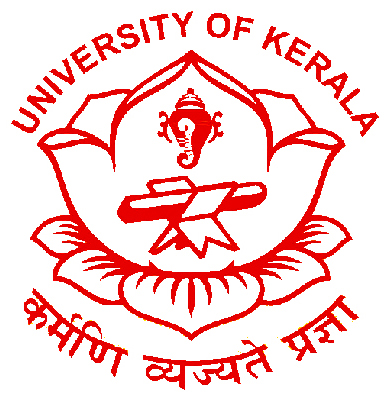
Department of Physics
University of Kerala
Established in 1970
Re acreditted by NAAC with A++ grade
Department of Physics
University of Kerala
Kariavattom Campus
Thiruvananthapuram
Microwave Materials
Advanced microwave materials demand special attention as they serve as the integral parts of high-end electronic devices targeted for the progress of communication technology. The core aspect of microwave communication technology is the efficient transmission and reception of information with ensured data security and lesser environmental impacts. The proper design and development of antennas are inevitable in achieving the aforementioned objectives.
Microwave Antennas
Antennas have remained an integral part of the communication network, from conventional telecommunication systems relying on electromagnetic energy to the advanced electronic devices integrated into the internet of things (IoT). We focus on the development of microwave antennas by suitable selection of materials, the adaption of processing techniques, and proper antenna designing to achieve minimum return loss, wide operational bandwidth, and high gain. The low loss dielectric materials, polymer-ceramic composites, and magnetodielectric materials processed via conventional solid-state sintering and energy-efficient cold-sintering are explored for the intended applications, where the designing part is assisted by ANSYS High-Frequency Structure Simulator (HFSS) software
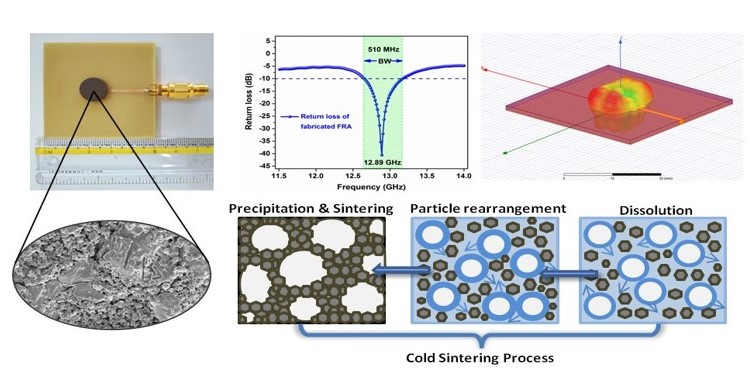

Microwave Attenuators
Microwave attenuators ensure safe level operation of electronic equipment and data security by avoiding undesirable interference of electromagnetic radiation. Our research focuses on innovating inorganic-organic hybrid structures and advanced ceramic materials offering excellent electrical conductivity and magnetism for efficient energy attenuation. Achieving superior microwave absorption through attentive tailoring of the structure and morphology of materials is the key emphasis of the study, which extends to low-dimensional systems as well. Further, we are equally invested in bringing innovations in processing techniques and designing strategies to make microwave attenuators more convenient for applications.
Recent publications in the area of microwave materials from the group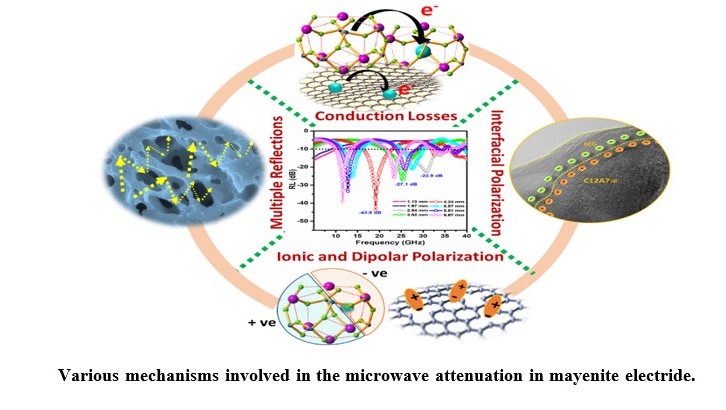
Inorganic Phosphors
The main focus of this research theme is to correlate crystal structure and photoluminescence properties towards the development of LEDs and materials for optical thermometry, especially in perovskites and garnets. Here we explore luminescence and its thermal stability of localized centers (rare-earth ions like Eu3+, Dy3+, Tb3+, Sm3+; transition metal ions like Mn4+, Cr3+ and metalloids like Bi3+, Sn2+ or Te4+) or complex ions (charge transfer transitions on [WO4]2- or [VO4]3- groups). The crystal structure has a significant influence on the photoluminescence of these luminescent centers. Structure-luminescence correlation in inorganic solids can be identified for multifunctional applications in solid-state lighting, optical temperature sensing, anticounterfeiting, latent fingerprint identification, wavelength detection, etc. Energy transfer mechanisms of various kinds; for example, energy transfer from sensitizer to the activator and from self-activated luminescent centers to the activator, can also be explored to enhance the photoluminescence of inorganic phosphors.
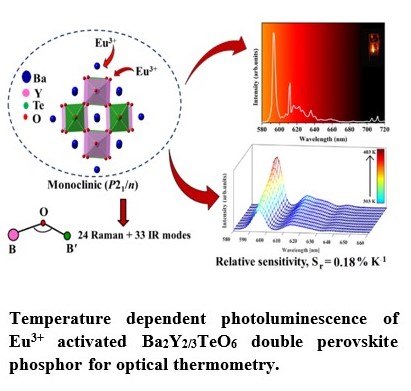
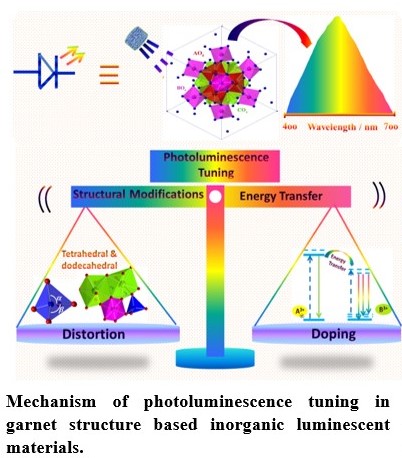
Recent publications in the area of inorganic phosphors from the group